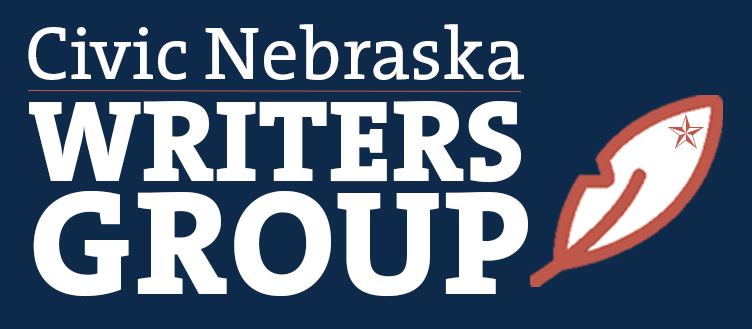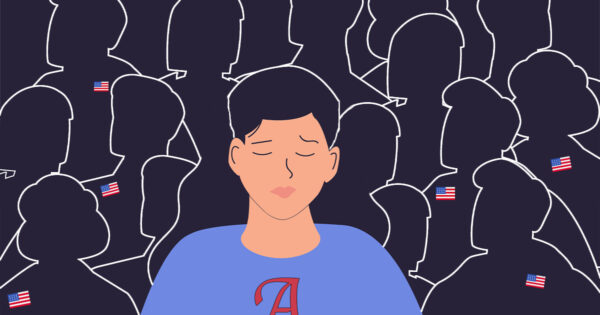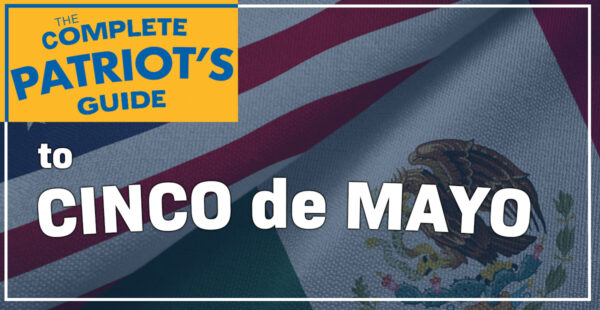Labor Day weekend 2020. I am sitting in a coffee shop in downtown Omaha. Scattered throughout the shop at responsible distances are teens and tweens poring over their homework. Between sips of matcha and nibbles of gluten-free donut, most of us are masked as we stare at our screens.
For a moment, I toggle to my calendar and see 9/11 is coming up. I think back to who I was when it all happened – just a suede-headed 14-year-old in a hard-shelled back brace in the windswept town of Scottsbluff.
 Unlike the better-known, almost Rockwellian towns in Nebraska such as Lincoln or Omaha, Scottsbluff doesn’t have lush prairie farmland with loamy topsoil. Situated eight hours from all the better-known destinations, my hometown – with its yucca, sagebrush, and scrubby escarpments – sooner evokes “A Fistful of Dollars” before “American Gothic.”
Unlike the better-known, almost Rockwellian towns in Nebraska such as Lincoln or Omaha, Scottsbluff doesn’t have lush prairie farmland with loamy topsoil. Situated eight hours from all the better-known destinations, my hometown – with its yucca, sagebrush, and scrubby escarpments – sooner evokes “A Fistful of Dollars” before “American Gothic.”
What is more, unlike those better-known towns, no Interstate highways pass through Scottsbluff. The result is a heightened state of isolation. Whereas those better-known towns enjoy a steady stream of travelers en route to Denver or Chicago, Scottsbluff requires special effort to reach – an effort not every salesman or sightseer is willing to make. When travelers do bother to pop in, their Subarus, thigh gaps, and well-moisturized skin are some immediate giveaways of their foreignness.
Though originally belonging to Sitting Bull’s people, the area was settled by Greek ranchers and Japanese farmers, plus two larger factions whose ceaseless friction shape local politics to this day – Germans from Russia, apparently content to farm this so-so land; and Mexicans who showed up to weed the land after racism and disease had largely driven out the African-Americans who tried to settle in the area. Though the descendants of these factions insist they feel worlds apart, their endemic beer bloat, love of trucks, and statistically remarkable insistence on taking cases to trial belie the existence of any real duality.
It was this half-melted pot of stubborn resignation that guided me and my peers through the Sept. 11 attacks.
What’s going to happen next, we asked our teachers and parents.
Nothing, they told us. We’re fine.
What really happened next was a quick bout of jingoism, punctuated by the mass distribution of a commemorative T-shirt. I do not remember the exact details of the cheap white cotton tee, other than the disjointed pairing of a clipart flag and yellow ribbon, with something like “PROUD TO BE AMERICAN” superimposed in boldface Algerian typeface; all caps. Deep down, I knew this was a disservice. I did not necessarily lose all respect for wearers of the shirt, but their opinion on aesthetics no longer mattered when they questioned my half-vintage, half-homemade getups
As the subsequent War on Terror slowly unfolded, we continued to ask questions, striving to connect the dots between the insurgency on TV and the relative safety of our creature comforts.
The National Guard is getting deployed, we noticed. Is there going to be a draft? Will girls get drafted? And will we still have oil? You know, for plastic? How are we to drink our mid-morning Powerades if there is no plastic?
The grown-ups might then change the subject to more local threats like anhydrous ammonia theft, beet rot, or the far-reaching hazards of premarital sex.
In reassuring us that everything was fine and that we needed to focus on the ills they identified for us, we ultimately got the message that there was an outside world, where real news happened, and then there was Scottsbluff. What happened out there had little bearing on our day-to-day life on the High Plains, so why fuss. No need to protest; no need to write your Congressman. Whatever happens in New York or London was their problem. Things would be business as usual in our deliberately miserable, rhinestone-jeaned little burg.
Looking back, I realize the grown-ups meant well, but that outlook was incredibly… adolescent. Being only 14, I was too wrapped up in my own self-centeredness to recognize it as such.
This selfish, Que sera outlook left a deep impression on me and followed me into college. Freshman year, I persuasively pooh-poohed a classmate’s presentation about her dream of ramping up recycling efforts in our state. Heads nodded as I insisted our consumer waste wouldn’t make a difference in the grand scheme of things. After all, can’t we just open more landfills with all the space around here.
Sorry about that, Girl with Good Ideas. It was the early 2000s. Checking e-mail was still a slow, conscious act we might perform once or twice daily. Though Facebook existed, it was restricted to the privileged few with a school e-mail address, and those of us on The Facebook weren’t using to share news and information. There was literally no news feed to feed.
At this point, I am inclined to sit back in a rocking chair and offer everyone a Werther’s Original. Let me instead return to 2020 – a year marked by virulence and racial strife; its every minute documented by our increasingly interconnected devices. Life is still a little isolated and a little slow in Scottsbluff. For instance, I am pretty sure I still can’t get a pour-over there.
But in many other more important ways, Scottsbluff has grown up significantly since 9/11. My peers are now the new guard of grownups, and they realize change is not limited to the halls of Congress or the goings-on of Wall Street. Rather, it seems understood that change starts with each and every one of us, and it can be as simple as a mask. Though many from my hometown use social media to air their misgivings about the science and the statistics of COVID-19, on a July visit home I noticed how many people wore masks, even if it was just as a common courtesy for their fellow man.
On that same visit, I was heartened to see that in the wake of the George Floyd protests, young people pressed the school board to confront the racism that pervades the school system. In other words, they forced the old guard to acknowledge that racism is not limited to the major metro areas of this country; it thrives in Scottsbluff, too. Thanks to their speaking up, it is now on the record that the school system’s apparent inaction – though seemingly removed from the grisly police-on-citizen images across the news – nevertheless affects the children in its charge.
To that, I proudly raise my matcha. While I do not expect nor want my hometown to stop live-laugh-love-ing anytime soon, I applaud its willingness to see how the Here and the Out There are not so different or far apart.
Already, this outlook benefits the sick and the historically oppressed. Imagine what else it can do.

Astrid Munn is the Child and Family Managing Attorney at Immigrant Legal Center in Omaha. A native of Scottsbluff, Astrid began her career as a journalist before earning her law degree from Washington University in St. Louis. She previously practiced immigration law in the D.C./Baltimore area and personal injury law in Western Nebraska.




